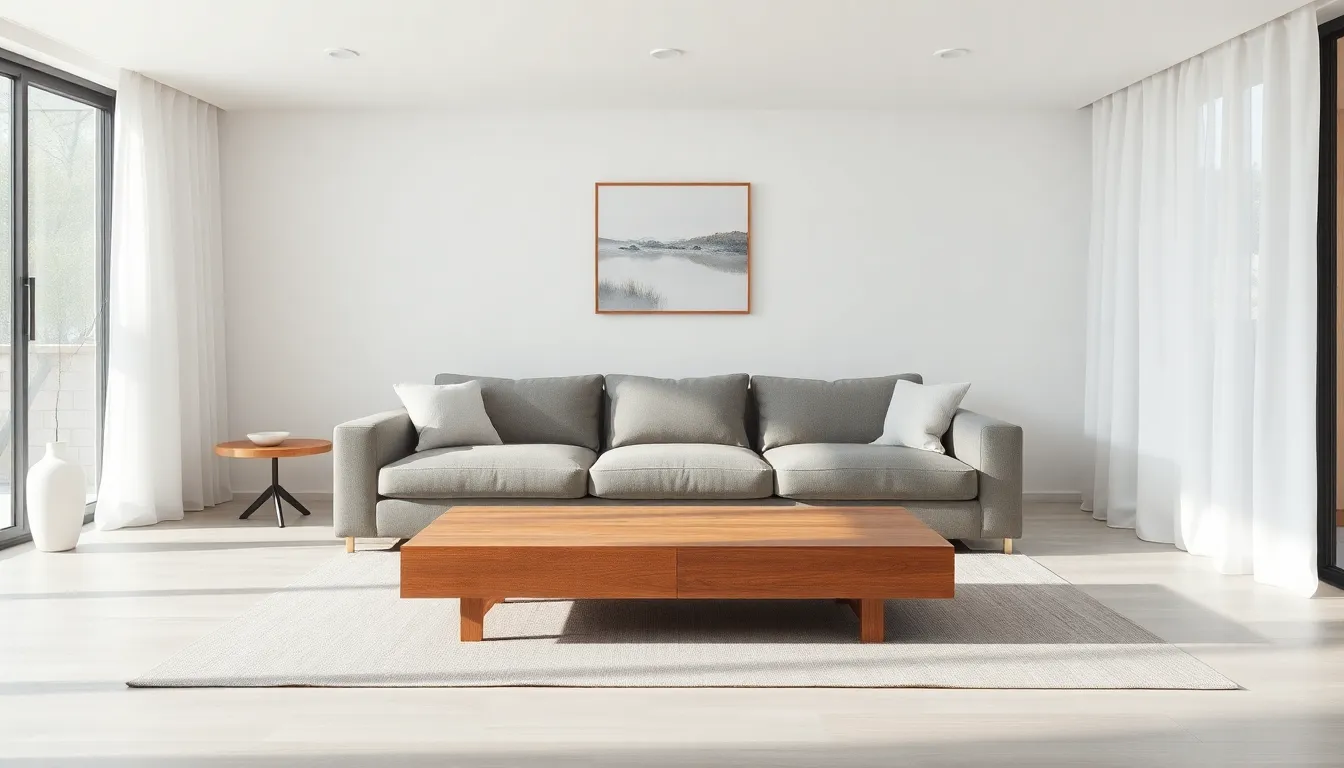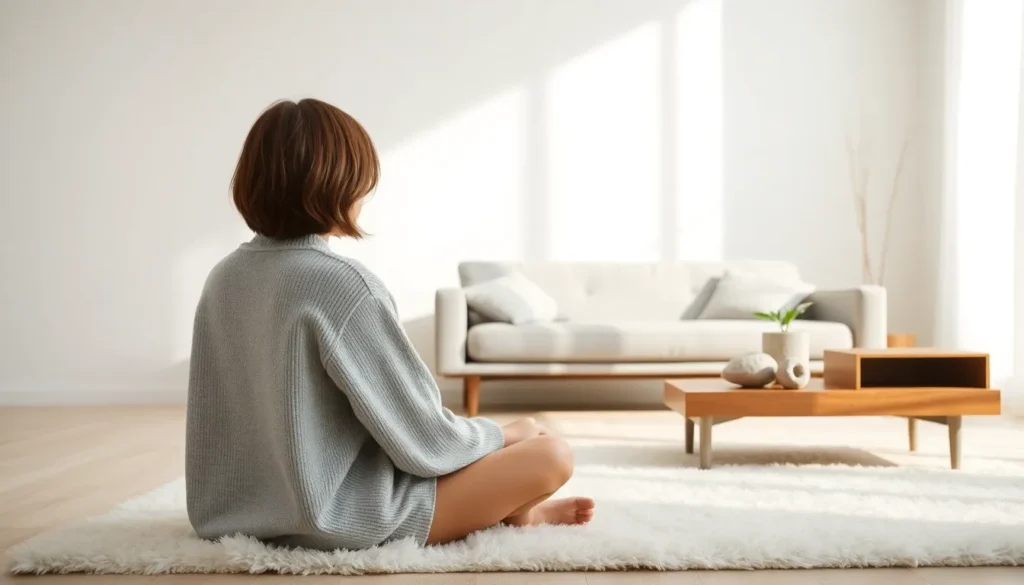In a world overflowing with stuff, the minimalist living room design emerges as a breath of fresh air, or maybe just a well-placed potted plant. Imagine a space where clutter takes a backseat, and simplicity reigns supreme. This isn’t just about less; it’s about creating a sanctuary that invites relaxation and sparks joy.
Table of Contents
ToggleUnderstanding Minimalist Living Room Design
Minimalist living room design emphasizes simplicity and functionality. This style creates a peaceful environment that fosters relaxation.
Key Principles of Minimalism
Simplicity reigns in minimalist design. Each item in a room serves a purpose, reducing visual clutter. Neutral color palettes, like whites, grays, and beiges, dominate minimalist spaces, creating cohesive looks. Open spaces encourage movement and connection, with furniture placed for optimal flow. Natural light plays a crucial role, enhancing the serene atmosphere and highlighting selected decor elements.
Benefits of Minimalist Design
Minimalist design offers numerous advantages. It simplifies maintenance, making cleaning easier due to fewer items. Stress reduction occurs as clutter diminishes, fostering a calming environment. Creativity flourishes in a minimalist space, allowing individuals to appreciate and focus on fewer, cherished objects. Financial savings arise from purchasing fewer, higher-quality pieces, leading to meaningful investments.
Essential Elements of Minimalist Living Room Design

Minimalist living room design focuses on key elements that enhance simplicity and tranquility. This approach prioritizes a serene environment while ensuring functionality.
Color Palette and Textures
Neutral color palettes dominate minimalist designs. Soft whites, grays, and muted tones create a calm atmosphere. Textures add depth without overwhelming the senses. Natural materials like linen, wood, and stone contribute warmth. Combining these elements fosters harmony while maintaining visual interest. Simplicity takes center stage, allowing art pieces or accents to stand out against a subdued backdrop.
Furniture Selection
Furniture selection significantly impacts the overall aesthetic. Choosing sleek, functional pieces promotes open space. Low-profile sofas and streamlined chairs enhance flow. Multi-functional furniture, such as storage ottomans or coffee tables with hidden compartments, maximizes utility. Prioritizing quality over quantity leads to thoughtful investments in enduring designs. Fewer, well-chosen pieces create an inviting space, emphasizing comfort without clutter.
Tips for Creating a Minimalist Living Room
Creating a minimalist living room requires intentional choices that enhance tranquility and functionality. These tips bring simplicity to design while maximizing comfort.
Decluttering Your Space
Decluttering serves as the first step toward a minimalist living room. Start by removing non-essential items that do not contribute to the room’s aesthetic or functionality. Keeping only a few decorative pieces, such as a single artwork or a potted plant, can create a focal point without overwhelming the space. Organizing storage areas aids in maintaining a tidy environment. Utilizing hidden storage solutions, like decorative boxes or built-in shelves, keeps essential items accessible yet out of sight. Regularly reassessing items ensures that only necessities remain, fostering an atmosphere of calm and promoting a sense of peace.
Incorporating Functional Decor
Incorporating functional decor highlights both beauty and practicality. Choose versatile pieces that serve multiple purposes, such as a coffee table that doubles as storage. Selecting furniture with clean lines emphasizes simplicity and enhances flow. Additionally, decorative items like wall-mounted shelves offer display space while maintaining an open feel. Textures from natural materials, like woven baskets or wooden accents, can add warmth and depth to the design. Prioritizing quality over quantity ensures that each piece resonates with the overall minimalist theme while contributing to a serene environment.
Common Mistakes to Avoid
Minimalist living room design invites serenity, but it’s easy to make missteps. Understanding common mistakes helps create a truly peaceful space.
Overcomplicating the Design
Avoid adding too many accessories or decor items that clutter the space. Focusing on simplicity enhances that calm atmosphere. Pieces chosen should serve a purpose; excess only detracts from the intentional design. Prioritize open layouts that promote free movement, as each corner needs to breathe. Simplified, cohesive designs communicate tranquility effortlessly.
Ignoring Personal Style
Minimalism doesn’t mean sacrificing personal flair. Incorporating meaningful pieces reflects individuality and should resonate with those using the space. Choosing decor that aligns with personal taste creates warmth and comfort. Base selections on preferences and lifestyle needs, creating a living room that feels personal. When minimalism embraces a distinct style, the space transforms into a true sanctuary.
Embracing minimalist living room design can profoundly impact one’s quality of life. By prioritizing simplicity and functionality, individuals can create a serene sanctuary that fosters relaxation and creativity. The focus on neutral palettes and natural materials enhances the calming atmosphere while promoting a sense of openness.
Incorporating multi-functional furniture and thoughtful decor choices ensures that every piece serves a purpose, contributing to a clutter-free environment. Ultimately, minimalist design isn’t just about less; it’s about crafting a space that reflects personal style and enhances well-being. With these principles in mind, anyone can transform their living room into a tranquil retreat.



